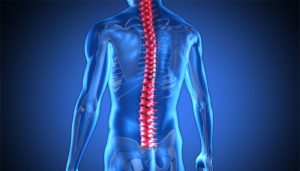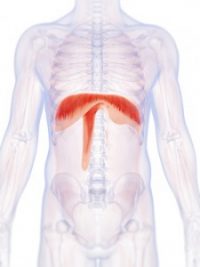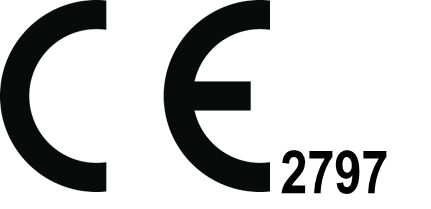
Within all of us is a spinal cord that connects every square inch of your body to your brain. The spinal cord itself extends from the base of the brain down to your pelvic region, and the vertebrae that make up your spine protect it.
Just like all parts of the human body, the spinal cord, too, can be injured and damaged. A spinal cord injury can be defined as either direct or indirect damage to the spinal cord that may affect mobility, sensation, and other bodily functions.
While not all spinal cord injuries result in paralysis, there is usually lost or impaired function with a spinal cord injury. For most who have spinal cord injuries, the spinal cord itself is still intact, meaning the damage was caused indirectly by damage to the bones, tissues, or vessels within the spinal column.
If paralysis does occur with a spinal cord injury, it is most likely due to damaged neurons within the cord itself.
Types of Paralysis
As mentioned above, a spinal cord injury may result in paralysis. Paralysis is defined as nerve damage that results in a loss of muscle strength and control. It’s important to note that the muscles themselves are usually not damaged, it’s the nerves that deliver the signals to the muscles that are causing the paralysis.
There are several types of paralysis that may or may not affect an individual with a spinal cord injury at a particular time. Below is a chart with the types and degrees a spinal cord injury victim can have.
[table id=1 /]
Depending on if some or all muscle control ever returns to a paralysis victim, the paralysis will be considered either temporary or permanent. Partial paralysis means that the victim still has some control of his/her muscles, while complete paralysis means that muscle control never returns to the victim. Finally, flaccid paralysis is when the muscles are relaxed and therefore shrink, while spastic paralysis is when muscles are tight and hard, and might even jerk periodically in what is called a spasm.
Paralysis is defined as either localized or generalized. Paralysis is localized when it only affects a certain part of the body, such as the face or individual limbs. When paralysis is generalized, it affects a much wider part of the body, such as both legs or the lungs.
Generalized paralysis is further defined depending on how much of the body is paralyzed, ranging from Monoplegia to Quadriplegia (Tetraplegia).
Monoplegia affects one limb only. Diplegia affects both sides of the body and in the same area on both sides. Hemiplegia affects multiple parts of one side of the body. Paraplegia specifically defines paralysis of both legs and sometimes other parts of the hip and pelvic region. Finally, Quadriplegia (Tetraplegia) affects all four limbs and can even sometimes mean the whole body is paralyzed from the neck down, including internal organs.
Causes of Spinal Cord Injuries
Spinal cord injuries can be caused by both indirect and direct damage, including infections, tumors, and compression from a fractured vertebrae. Additionally, spinal cord injuries can occur outside or even inside the spinal cord itself, although the latter is less common.
Fractured bones in the spine can result in compression of the spinal cord resulting in injury. A hematoma, which is an accumulation of blood, can also injure the spinal cord. Tumors, abscesses, and damaged disks in the spine can also lead to spinal cord injury outside of the spinal cord.
Certain diseases and disorders like HIV, multiple sclerosis, vitamin B12 or copper deficiency, syphilis, polio, spina bifida, and even arthritis can all result in injuries inside the spinal cord.
Spinal cord injuries can be the result of diseases like the ones mentioned above, as well as falls, car accidents, and other traumas. Minor injuries due to a weak spine, untreated abscesses, and more can also result in spinal cord injury.
Once diagnosed with a spinal cord injury such as paralysis, there are many ways to lessen the long-term damage and improve the patient’s outlook and prognosis.
Treatment for Spinal Cord Injuries
It should go without saying that an injury to the spinal cord is very serious and requires immediate medical attention. Proper medical care soon after the injury may help to avoid long-term negative side effects.
Medication, such as corticosteroid drugs, may be used to reduce swelling associated with spinal cord injuries. In addition, much rest may be required to ensure the spine has time to heal. Since there is no cure for spinal cord injury, special medical attention is required for spinal cord injury patients.
If someone is temporarily or permanently paralyzed or bedridden due to a spinal cord injury, it is important for that person to receive special medical attention to prevent pressure sores, urinary problems, pneumonia, blood clots, and mental illness. Appropriate care can reduce the risk of additional injury or complications associated with spinal cord injuries.
Often, spinal cord injury victims may experience mental illness, such as depression due to their loss of body functions. For this, counseling and support systems like friends and family are just as important as physical rehabilitation.
To recover as much function from a spinal cord injury, a patient should enter rehabilitation, which includes receiving care from nurses, therapists, nutritionists, psychologists, and more.
Physical therapy is particularly important as it can help with strengthening and stretching the muscles that may be affected by a spinal cord injury. In addition, physical therapy can help train spinal cord injury patients on how to use certain assistive devices, as well as how to manage side effects from spinal cord injuries, such as pain and muscle spasms.
In conjunction with physical therapy, occupational therapy helps spinal cord injury patients relearn everyday tasks and movements, as well as helps the patient to regain some form of muscle control.
Lastly, it is important for friends, family, and close ones to a spinal cord injury victim to offer support and care. This can be an important part of maintaining self-esteem and mitigating any negative mental side effects that may occur after a spinal cord injury.
Breathing and Spinal Cord Injuries
Depending on the location of the injury to the spinal cord, breathing may also be affected.
- Patients with an injury at C1, C2, and higher have little or no movement of their head and neck, and are entirely dependent on ventilatory assistance for breathing.
- Patients with an injury at C3 usually have control of their head and neck and are occasionally weaned from ventilatory assistance.
- Patients with an injury at C4 usually have control of their head and neck, some shoulder movement and are often weaned from ventilatory assistance.
- Patients with injuries at C5 and lower have control of their head and neck, progressively more control of their arms and hands and are rarely in need of ventilatory assistance.
- Patients with injuries below the cervical spine have full function in the upper extremities, which is classified as paraplegia. Paraplegics do not lose control of respiratory drive.
Ventilatory assistance for individuals with a spinal cord injury is typically provided by either mechanical ventilation or diaphragm pacing, also called phrenic nerve pacing (see our article on mechanical ventilation for more information about how mechanical ventilation works and how it compares to diaphragm pacing). Patients often prefer diaphragm pacing because, among other benefits, it provides a more natural breathing function than mechanical ventilation, allows for greater freedom and mobility, reduces the number of hospitals stays typically needed, and provides a significant cost savings. At Avery Biomedical Devices, we manufacture the only diaphragm pacing system that has full premarket approval from the FDA, and is the only device approved for both adult and pediatric use. To see a comparison of the Avery Breathing Pacemaker and other devices on the market, please see “Why the Avery Breathing Pacemaker?”
The Avery Breathing Pacemaker
The Avery Breathing Pacing System is the only diaphragm-pacing system with full pre-market approval from the USFDA and CE marking privileges under the European Active Implantable Medical Device Directive for both adult and pediatric use. In addition, its system of using small implanted radiofrequency receivers rather than electrode wires that pass directly through the skin may decrease a patient’s risk of infection and ongoing wound care management issues. Avery has been commercially distributing diaphragm pacing systems since the early 1970s. Since then, over 2,000 patients have been implanted in over 40 countries, establishing an unsurpassed record of safety and reliability.
Request More Information About the Avery Breathing Pacemaker
Resources cited below:



